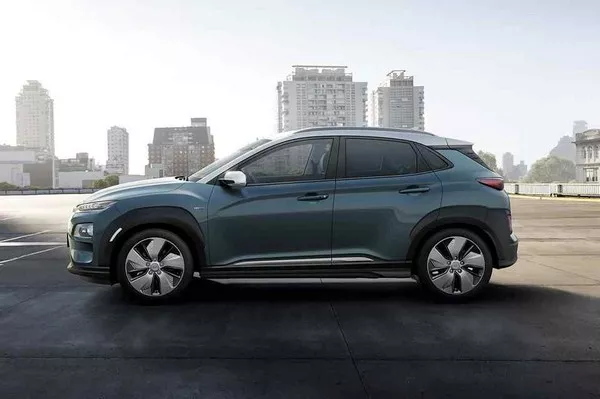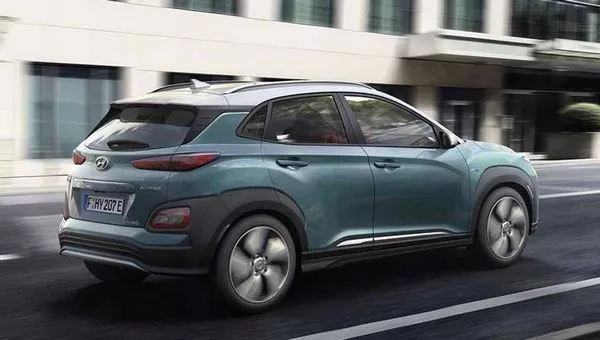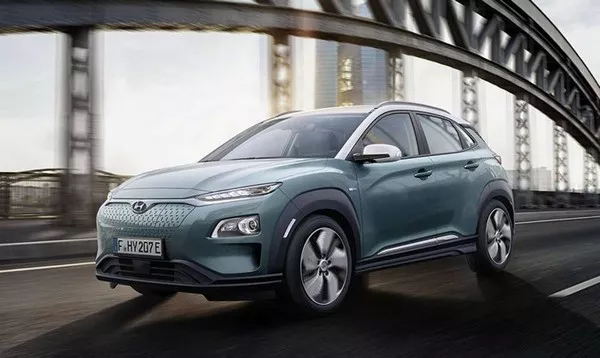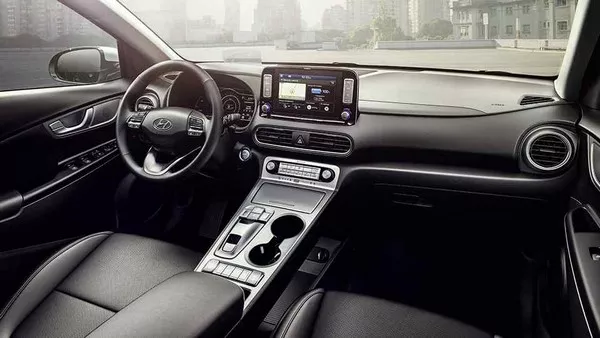In response to the growing needs of zero-emissions crossovers, Hyundai has launched its own electric crossover - the Hyundai Kona Electric 2018. Hyundai's electrified crossover is offered in two variants to allow the company to serve a huge number of customers interested in this new EV.
All-New Hyundai Kona Electric – Product Overview
Starting with the base variant, it is powered by a 39.2 kWh battery with 132 PS and 395 Nm of torque, allowing the vehicle to run a maximum of 300 km on one full charge. This entry-level model whirs from 0-100 km/h within a 9.3 seconds.
Meanwhile, the higher-end variant, thanks to a 64 kWh battery, is capable of doling out 202 PS and comes with an admirable driving range of 470 km per charge. With the added power, the time to do the 0-100km/h sprint is lessened to 7.6 seconds.

The base variant is powered by a 39.2 kWh battery
According to the latest car news, the figures provided are based on the new Worldwide harmonized Light vehicles Test Procedure (WLTP), a new benchmark which is allegedly more relevant than the current New European Driving Cycle (NEDC).
Hyundai informs that it will take 6 hours and 10 minutes to make a 39.2 kWh battery fully charged. In the meantime, you have to spend 9 hours and 40 minutes charging the battery of the high-end model to 100%. In urgent cases, Hyundai also provides a 100kW DC quick charger which gives the car 80% of battery within 54 minutes only.

Hyundai informs that it will take 6 hours and 10 minutes to make a 39.2 kWh battery fully charged
Owing to the integrated battery packs, the Kona cabin space is preserved. The Kona can offer 373 L of cargo in the rear but having the quick charger cable in the car makes the number dropped to 332 L.
The overall design is taken from the conventional Kona, but to be an electric car, the new Kona has received some subtle changes. Firstly, the grille is closed as an EV doesn’t need the air to go through the cooling cores. Instead, a more aerodynamic front bumper, equipped with ‘lateral air curtains’ to decrease the wheel arches’ turbulence, dominates the front end.
The body is slightly improved with silver side-sills and the rear wing is also mildly upgraded. Finally, the Hyundai Kona Electric 2018 has a 17’’alloys to differentiate itself from internal combustion Konas.
>>> Related: Honda Kona Philippines price list, specs, promos & more

The Hyundai Kona Electric 2018 has a 17’’alloys to differentiate itself from internal combustion Konas
Stepping inside, the interior is highlighted by a 7’’ display and eight-way adjustable power seats for both driver and front passengers. In particular, the driver' seat receives additional lumbar support adjustment to let the driver get the perfect position while on the move.
The Hyundai Kona Electric 2018 is planned to be launched at the upcoming 2018 Geneva Motor Show taking place on March 6th. Latest updates on upcoming Hyundai cars can be found in our Complete guide to the Hyundai Philippines' local lineup.

The interior is highlighted by a 7’’ display and eight-way adjustable power seats for both driver and front passengers
Know more about Hyundai Kona 2026

The Hyundai Kona 2023 is a subcompact crossover brought in by the Korean marque. It is available in the Philippines in one variant only which is priced at Php 1,188,000. Powering this vehicle is a 2.0-liter NU MPI Atkinson gasoline engine capable of generating 147 horsepower and 179 Nm of torque. Only a 6-speed automatic transmission is used to drive the power from the engine to the front wheels exclusively.
In terms of dimensions, the Kona has a length of 4,165 mm, a width of 1,800 mm, and a height of 1,550 mm. Additionally, it comes with a wheelbase and ground clearance rated at 2,600 mm and 170 mm, respectively. In the local market, this Korean subcompact crossover goes up against the likes of the Mazda CX-3, Kia Seltos, and Geely Coolray.
Discontinued
ExploreRecent posts
- 2021 Hyundai Kona debut Sep 04, 2020
- Hyundai Kona Night Edition debut Oct 14, 2020
- Hyundai Kona gets santa fe grille Sep 30, 2020
- 2021 Hyundai Kona N Spy Video Sep 30, 2020
- Hyundai Kona N will be a gnarly crossover with 75% more power Sep 30, 2020















